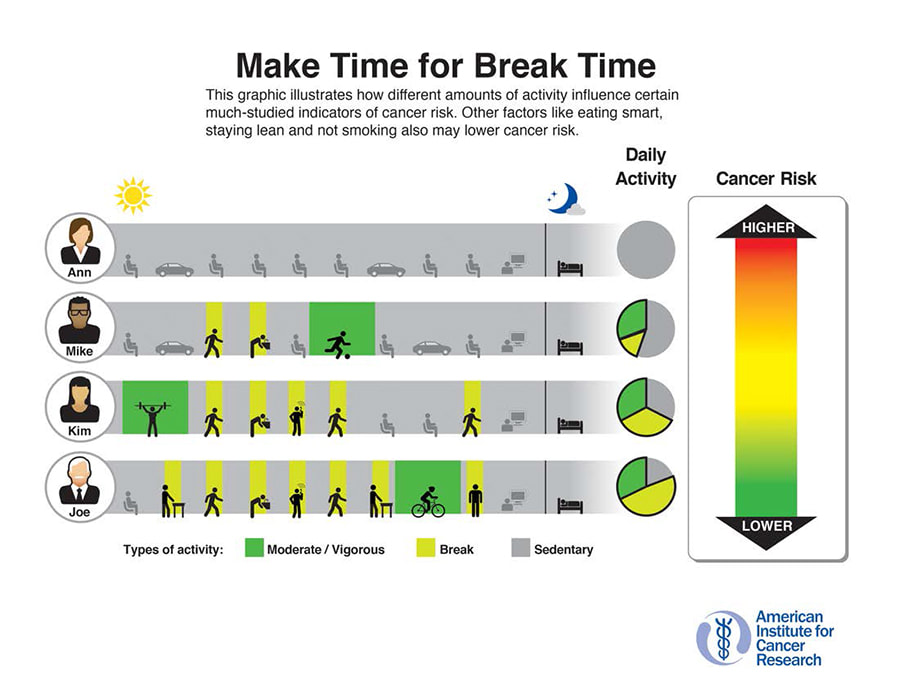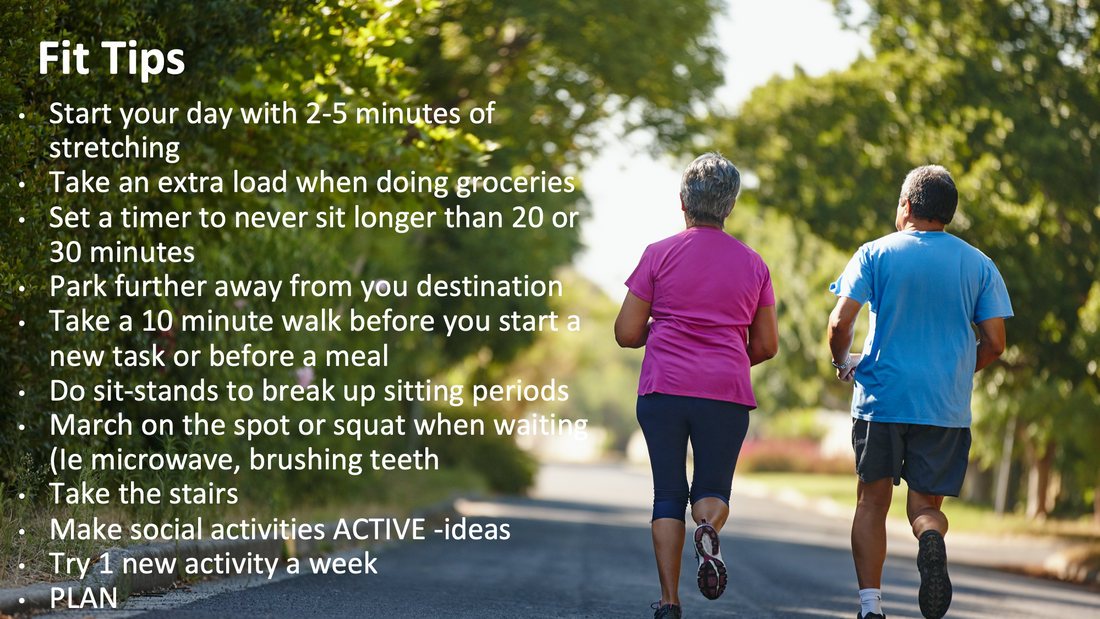|
When it comes to lifestyle and health, we sometimes over-index on exercise while ignoring the role of physical activity. We actively encourage 150 minutes a week as being the right starting dose for exercise but we often neglect to emphasize the importance of activity, or the deleterious effect of sedentary behaviors. From a health perspective, exercise and activity are different and complementary. They are the two sides of the MOVE pillar - each contributing different, synergistic benefits to your overall health. But first, what’s the difference between movement and exercise? (as defined by the World Health Organization)
Independent of exercise, physical inactivity or sedentary behaviour is recognized as one of the leading risk factors for noncommunicable diseases and death worldwide. For individuals, the failure to enjoy adequate levels of physical activity increases the risk of cardiovascular disease (heart attack and stroke), cancer, and diabetes by 20–30% and shortens lifespan by 3–5 years. Sedentary behaviour, cardiovascular and metabolic health Sedentary behaviour negatively affects the way our bodies process the two major energy sources from our diets: fat and glucose. Even short periods of sedentary behaviour decreases our body’s ability to both use and store fat. Being inactive decreases levels of lipoprotein lipase (LPL) the enzyme that facilitates the uptake of fat into muscle and adipose tissue. Similarly, sedentary behaviour has been shown to decrease the expression and concentration of glucose receptors in muscle. These combined effects make lack of activity a particularly potent risk for both cardiovascular and metabolic risk. Hamburg et al. (2007) took 22 adult volunteers and had them remain in bed for 23.5 hrs per day for 5 days. At the end of the study - despite no change in weight they experience significant disruption of important cardio-metabolic biomarkers - increased cholesterol, increased triglycerides, higher glucose, and signs of insulin resistance, the process underlying Type II Diabetes. In fact when challenged with glucose their body’s had to release 67% more insulin in order to maintain normal blood sugar levels. In short - being sedentary rapidly increases your risk of cardiovascular disease and diabetes. Vascular Health Being sedentary, decreases vascular function independently of the effects on cardiometabolic risk factors with apparent effects on endothelial dysfunction. Cancer Multiple studies have shown links between sedentary lifestyle and increased cancer risk specifically for colon, endometrial, ovarian and breast. Bone Health It has been well documented that lack of activity leads to decreased bone mineral density and the corresponding increase in the risk of fracture from the development of osteoporosis. In young healthy men, 12 weeks of bedrest can decrease bone density by 1-4% Mental Health & Psychosocial Well-being Physically active people have higher physical and mental quality of life as well as self esteem. Whether this is due to the increase of physical activity or the reduction of sedentary lifestyle is not entirely clear but it is safe to say that increasing physical activity and being less sedentary is associated with improved mental health and psychosocial well-being. All of these effects combine to create a dose-response relationship between time spent in sedentary behavior and mortality. Much of the research on sedentary behaviour has focused on TV viewing time and more recently screen time. Each 2 hour per day increase in TV time was associated with a 14-20% increase in the risk of diabetes independent of other physical activity. How can you be more physically active? Planning is essential to make this part of your life. When planning your week be sure to block times to include both
Both exercise and physical activity have independent and synergistic effects on your health, be smart and get both.
|
AuthorDr. Brendan Byrne Categories
All
|




 RSS Feed
RSS Feed
